Cream Pitcher & Sugar Bowl, Charles County
From the USS Maryland Silver Service
Cream Pitcher | Sugar Bowl
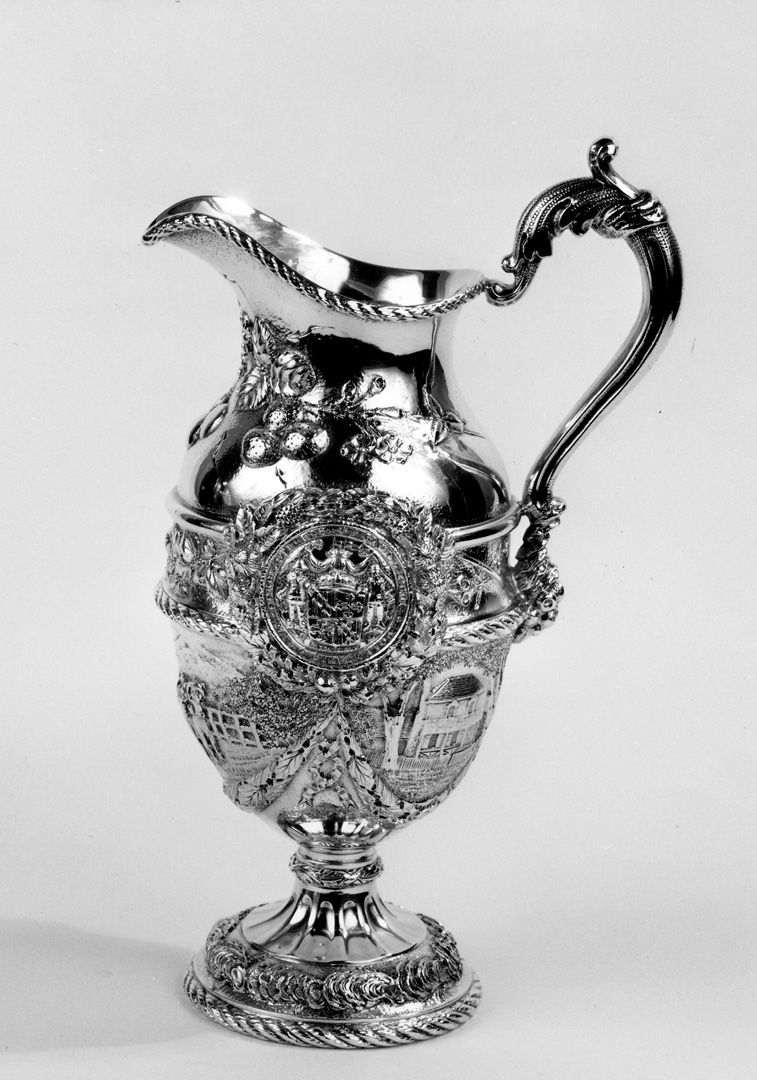
Object: Cream Pitcher, Charles County
Date: 1906
Medium: Sterling Silver
Dimensions: Overall height: 6 1/2", base diameter, 2 1/2"
Accession number: MSA SC 1545-0928
Charles County is the only county that is represented by two different pieces, a sugar bowl and a cream pitcher. Both of these pieces are aboard the USS Maryland SSBN 738, where they are displayed with two of the Garrett County candlesticks.
Charles County was created in 1658 by an Order in Council; it is not to be confused with an earlier Charles County (1650-1653) known as Old Charles County. The current County was named for Charles Calvert (1637-1715), 3rd Lord Baltimore. The design of both pieces is quite similar, as both are decorated with cherries, strawberries and blackberries on the upper sections, while festoons of tobacco leaves separate the scenes on the lower sections. The upper sections both feature a “border of progress and innovation,” while the lower sections are each adorned with three scenes specific to the county. An eagle mounted on a blackberry bramble sits atop the lid of the sugar bowl.
Scenes (left to right, top to bottom):
Despite early initiatives to make silk production profitable, Maryland lagged behind other colonies in developing the industry. The first silk factory in Maryland was not opened until 1829, after the development of a white mulberry tree that could produce two leaf growths a year, providing enough food for the silk worms.
Mulberry sprays and silk cocoons are also portrayed on the Calvert County coffee pot.
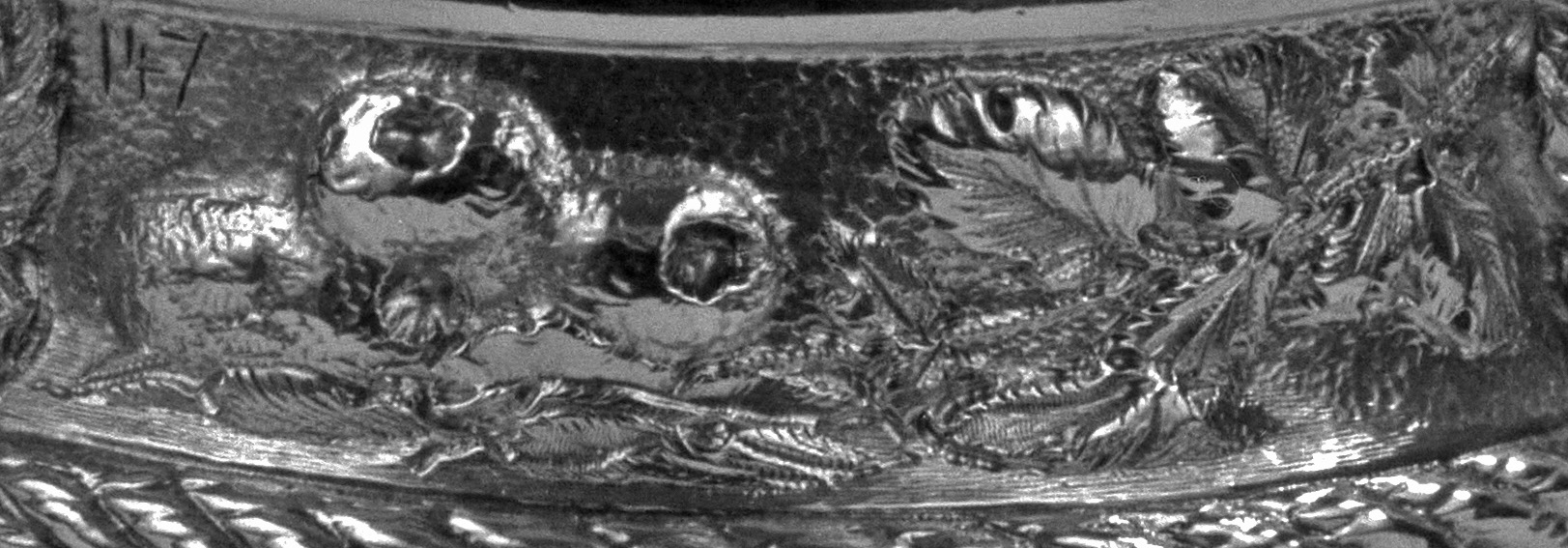
3. First Steel Pen (number 145)
The first steel pen is also depicted on pieces from St. Mary’s, Somerset, and Wicomico counties.
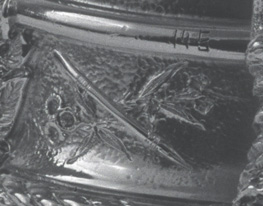
4. Oxen and Cart at Port Tobacco (number 143)
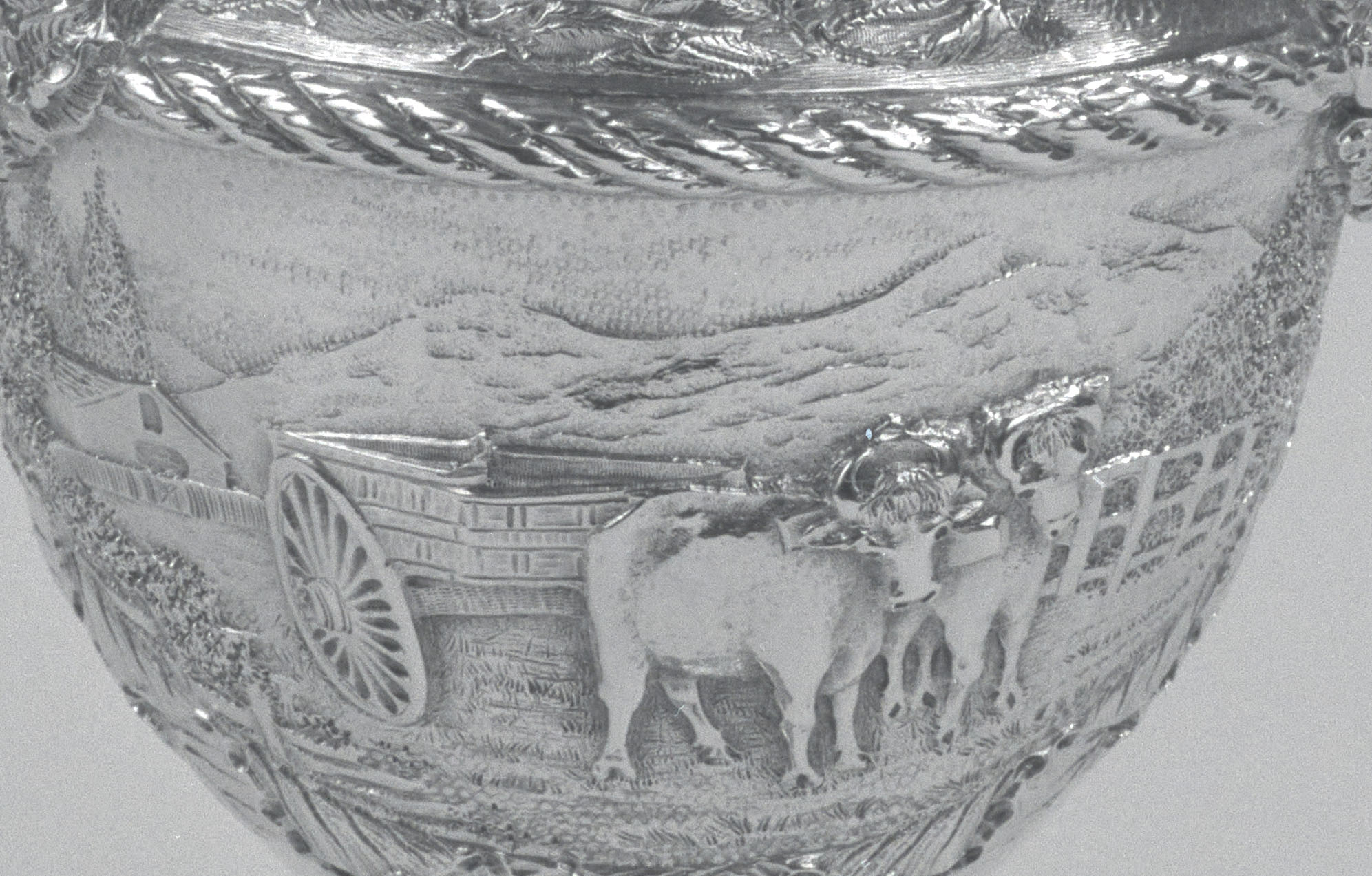
5. Trinity Church Rectory (number 142)
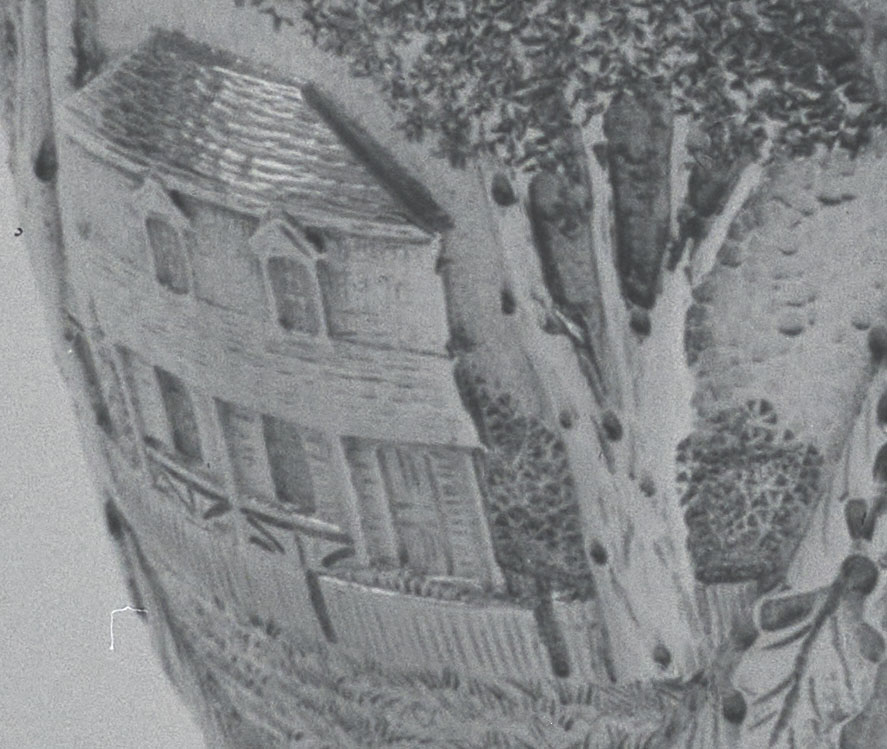
Scenes on the reverse (left to right, top to bottom):
1. Cokesbury Bell (number 146)
In 1888, the historic Cokesbury Bell was transferred to Goucher College, then in Baltimore City, and it remained with Goucher College until 1959 when it was presented to the Wesley Theological Seminary in Washington, D.C. The bell is also depicted on the pieces from Somerset, Wicomico, and St. Mary’s counties.

2. USS Maryland Cruiser
3. Register's Office (number 144)
In 1892, the center block of the building was lost to a fire, but the two wings that housed the office of the register of wills and court’s clerk office remained intact. These surviving wings were appropriated for other uses.
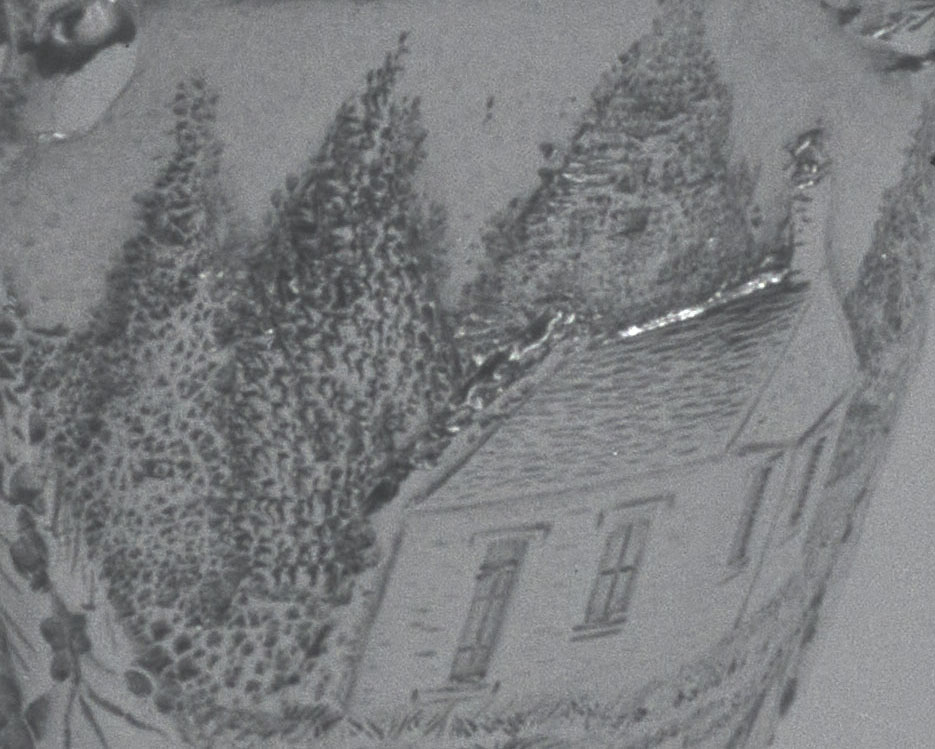
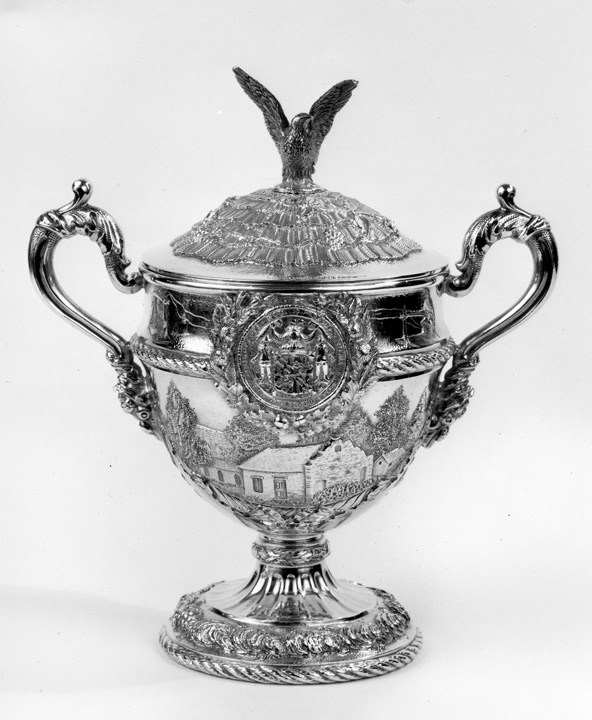
Maker: Samuel Kirk & Sons (1815-1979)
Object: Sugar Bowl with lid, Charles County
Date: 1906
Medium: Sterling Silver
Dimensions: Overall height, 5 5/16”; Overall width: 6
7/8”
Accession number: MSA SC 1545-0940
1. First Telegraph Set (number 141)
The original transmitting and receiving sets are now at the Smithsonian Institute and are also depicted on the pieces from Baltimore City and Baltimore, Calvert, St. Mary’s, Somerset, and Wicomico counties.

3. Clerk's Office and Christ Church Port Tobacco (number 138)
The Christ Church of Port Tobacco is also depicted on the back left of this scene. The church was built in 1830, but it was deconstructed and rebuilt in nearby La Plata in 1904.

Scenes on the reverse (left to right, top to bottom):
1. Silk Cocoons (number 140)
This scene depicts silk cocoons spun by silkworms. The cocoon is then spun into silk.
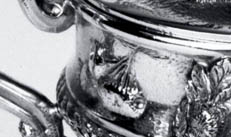
3. Havre-de-Venture (number 139)

|
This web site is presented for reference purposes under the doctrine of fair use. When this material is used, in whole or in part, proper citation and credit must be attributed to the Maryland State Archives. PLEASE NOTE: The site may contain material from other sources which may be under copyright. Rights assessment, and full originating source citation, is the responsibility of the user. |
© Copyright August 07, 2024 Maryland State Archives
